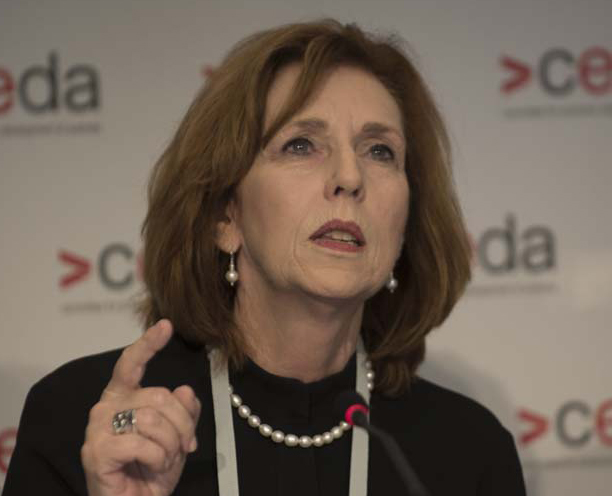Explore our Progress 2050 Goal Tracker
09/10/2016

Monash University President and Vice-Chancellor, Professor Margaret Gardner AO said that for Australia to see innovation success – and breakthroughs in research – there needed to be more long-term certainty in regards to funding and research policy.
“We must have more long-term certainty… People have to set long term (goals), they have to understand what they can do, and they have to watch it through, and they have to invest. You don’t invest and say, ‘Well, in two years I might change my mind’ – not if you’re seriously investing in R&D (research and development),” Professor Gardner said.
“When I look at what works, clusters work.”
Professor Gardner spoke about international examples of collaboration between universities and industry – such as the University of Warwick’s Warwick Manufacturing Group – that she argued were successful because of policy certainty.
“It was long term partnerships with industry, it was strategic investments from government, it was making the cluster work in the region they were in,” she said.
“We have clusters in Australia. I live in one around the Clayton precinct with CSIRO and small and medium enterprise, and a lot of manufacturing at Monash University. There’s Parkville in the centre, there’s Macquarie Park in New South Wales… We need to make the cluster example work, and that’s about recognising what’s been working at the moment.”
ARENA, Fishburners and Sirtex Non-Executive Director, Dr Katherine Woodthorpe agreed.
“One subset of that is the CRC (Cooperative Research Centres) program,” she said. “The bottom line is it’s industry, it’s other kinds of users of research, then the universities and other research institutes – and for 25 years they have been delivering outcomes,” Dr Woodthorpe said.
“It’s been a great program that has brought together all of those collaborators, and leveraged a lot of international funds into Australia as well. At our Antarctic CRC we have New Zealand, Germany, Japan and China as partners, and we’re leveraging their dollars into our R&D.
“They’re delivering in a big way, and we need to be careful we don’t chop those sort of programs off at the knees.”
Innovation and Science Australia Chair, Bill Ferris AC also said that CRCs were delivering outcomes.
“It’s pulled through by industry – because they are industry led, not academia led. When I’ve looked at the metrics available for CRCs… they look pretty good,” Mr Ferris said.
“There’s two ‘watch outs’ though. The collaboration we have – we need a lot more of it. We need businesses reaching into universities, and universities and others reaching out to business.
“Yes, we don’t want to chop and change stuff. But if you’ve got research funding for publicly funded universities, which have no metrics or requirement to worry about industry outcomes – arising out of that taxpayer funded research – well, that’s not good enough. We want to shift the needle, to some extent, so that is a metric.”
Dr Woodthorpe said that the value researchers could bring to industry was a metric that should be considered by universities measuring success.
“That’s been certainly a long-term issue, with universities measuring people through peer reviewed journals and publications – not their relationship with industry. That’s something we need to get our heads around, how we can better enable individuals within the system who really have a lot of value they could add to industry,” Dr Woodthorpe said.
Professor Gardner, however, cautioned that Australia shouldn’t be too prescriptive about links between research and industry.
“We need to be very careful that we actually leave room for research where you can’t see the impact immediately,” Professor Gardner said.
“One of our biggest cancer therapeutics that came all the way through, and through a CRC, started as research on something entirely different. And if you’d said, lets measure it this way… you would never have started it.
“It took decades, and it started with PhD research. So yes, the importance of investments in PhDs and industry collaboration is very important, but I think we have to be very careful about how we structure the metrics.”
Watch videos from State of the Nation 2016.
